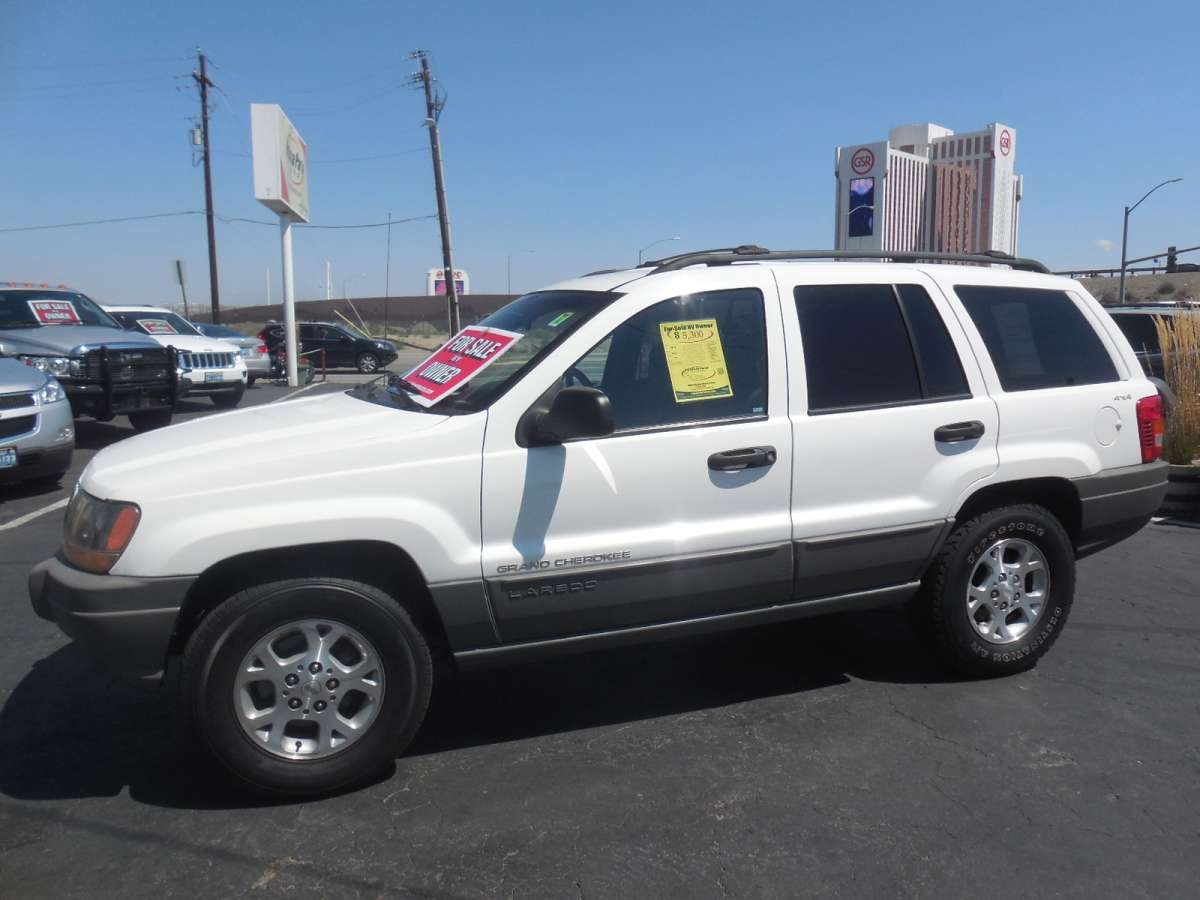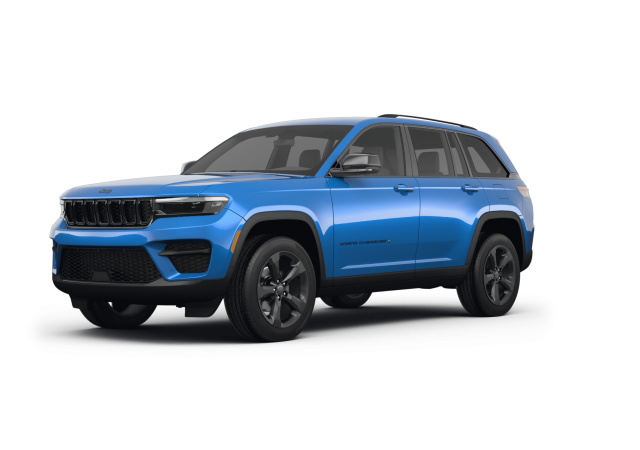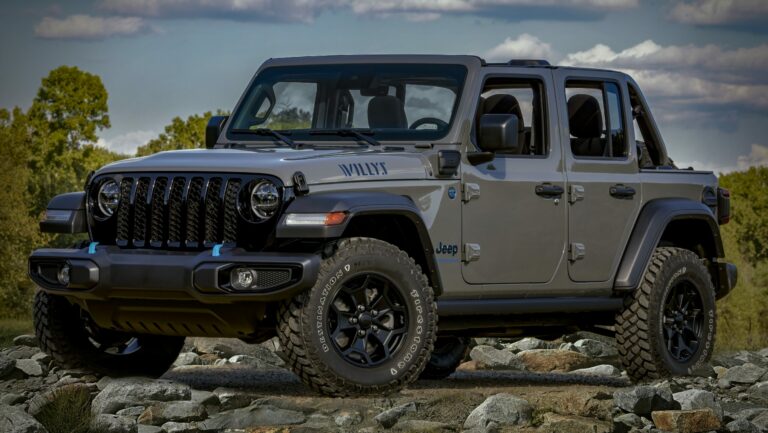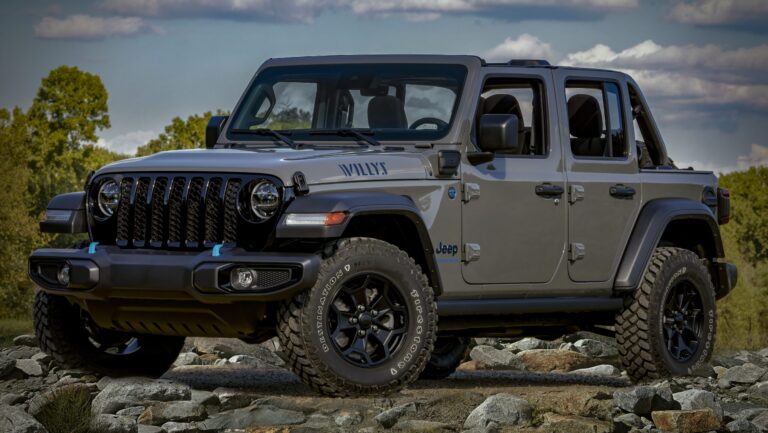Exploring 1980s Jeep SUVs for Sale: Beyond the Grand Cherokee Myth
Exploring 1980s Jeep SUVs for Sale: Beyond the Grand Cherokee Myth jeeps.truckstrend.com
The quest for a "1980s Jeep Grand Cherokee For Sale" often begins with a specific vision: a rugged, capable, yet comfortable SUV that embodies the spirit of an era defined by adventure and burgeoning automotive diversity. However, it’s crucial to clarify a common misconception right from the start: the iconic Jeep Grand Cherokee, as we know it, did not exist in the 1980s. The first-generation Grand Cherokee (ZJ) made its grand debut in 1992 as a 1993 model, signaling a new era for Jeep.
So, if you’re searching for a quintessential 1980s Jeep SUV that captures the essence of what a "Grand Cherokee" might have represented in that decade – a blend of utility, comfort, and distinct American style – your focus should turn to two other legendary models: the Jeep Cherokee (XJ) and the Jeep Grand Wagoneer (SJ). These vehicles not only defined Jeep’s presence in the 1980s but also laid the groundwork for the Grand Cherokee’s eventual success. This article will guide you through understanding, finding, and purchasing these incredible 1980s Jeep SUVs, offering practical advice and insights for both enthusiasts and first-time buyers.
Exploring 1980s Jeep SUVs for Sale: Beyond the Grand Cherokee Myth
The True 1980s Jeep Icons: Cherokee XJ and Grand Wagoneer SJ
While the Grand Cherokee was still a concept, the 1980s were a pivotal decade for Jeep, introducing and refining models that would become automotive legends.
1. The Revolutionary Jeep Cherokee (XJ): The Unsung Hero of the 80s
Introduced in 1984, the Jeep Cherokee XJ was nothing short of revolutionary. It pioneered the compact SUV segment, blending the capability of a traditional SUV with the comfort and handling of a passenger car, thanks to its unibody construction. This design was lighter, more rigid, and more fuel-efficient than its body-on-frame predecessors.
-
Key Features & Appeal:

- Groundbreaking Design: Its boxy, purposeful lines are instantly recognizable and have stood the test of time.
- Versatile Platform: Available in 2-door and 4-door configurations, with various trim levels from basic Pioneer to luxurious Limited and sporty Laredo.
- Legendary Engines: While early models had less desirable engines (2.5L AMC I4, 2.8L GM V6), the introduction of the robust and immensely popular 4.0L AMC Straight-6 engine in 1987 cemented its reputation for reliability and power.
- Off-Road Prowess: Equipped with capable 4×4 systems (Command-Trac and Selec-Trac), the XJ was renowned for its impressive off-road performance despite its compact size.
- Daily Driver Potential: Its relatively car-like handling made it suitable for daily commuting, a significant factor in its widespread appeal.

-
Why it’s a "Grand Cherokee" for the 80s Buyer: The XJ offered a balanced package of utility, comfort, and capability in a more manageable size, much like the Grand Cherokee would later do on a larger scale. It was a vehicle for families, adventurers, and anyone needing a reliable, do-anything SUV.

2. The Classic Luxury: The Jeep Grand Wagoneer (SJ)
The Grand Wagoneer, though originating in the 1960s, truly hit its stride as a luxury icon in the 1980s. It was the quintessential full-size American SUV, known for its distinctive woodgrain paneling, plush interiors, and robust, truck-like construction.
-
Key Features & Appeal:
- Timeless Styling: The Grand Wagoneer’s classic, commanding presence, often adorned with its signature faux wood paneling, evokes a sense of nostalgia and enduring style.
- Luxurious Interior: For its time, the Grand Wagoneer offered a highly appointed cabin with leather seats, power accessories, air conditioning, and premium sound systems, setting the standard for luxury SUVs.
- Robust Drivetrain: Primarily powered by the venerable AMC 360 V8 engine, it offered ample torque for towing and highway cruising, paired with a reliable automatic transmission and Quadra-Trac full-time 4×4 system.
- Family Hauler: With spacious seating for five and ample cargo room, it was the ideal vehicle for family road trips and adventures.
-
Why it’s a "Grand Cherokee" for the 80s Buyer: If your vision of a "Grand Cherokee" leans towards a larger, more luxurious, and traditional SUV experience from the 1980s, the Grand Wagoneer is the undisputed king. It literally carried the "Grand" name and was the pinnacle of Jeep’s offerings in that era.
Why Buy a 1980s Jeep Today?
Investing in a vintage 1980s Jeep, whether it’s an XJ or a Grand Wagoneer, offers a unique blend of benefits:
- Classic Appeal & Nostalgia: These vehicles possess an undeniable charm and evoke a strong sense of nostalgia for a simpler time in automotive design.
- Durability & Simplicity: Built with robust, often over-engineered components, these Jeeps are known for their longevity. Their mechanical simplicity makes them easier and often more affordable to maintain and repair than modern vehicles.
- Off-Road Capability: Both the XJ and SJ Grand Wagoneer remain highly capable off-roaders, perfect for weekend adventures or even serious trail conquering (especially modified XJs).
- Investment Potential: Well-maintained or restored examples, particularly Grand Wagoneers, have shown appreciation in value over recent years, making them potential collector’s items.
- Community & Support: A vast and passionate community of owners, mechanics, and parts suppliers exists for both models, offering invaluable support and resources.
Key Considerations When Buying a 1980s Jeep
Purchasing a vintage vehicle requires diligence. Here’s what to look for:
- Rust: This is the primary enemy of any older vehicle. Inspect the frame (especially on the Grand Wagoneer), floor pans, rocker panels, fenders, and around the windows. XJs can rust significantly around the unibody frame rails and rear quarter panels.
- Engine Condition:
- Cherokee XJ (4.0L I6): Listen for knocks, excessive smoke, and check for oil leaks. These engines are known for durability but can develop "Ticking" from exhaust manifold cracks or worn lifters.
- Grand Wagoneer (AMC 360 V8): Look for excessive oil consumption, blue smoke, and listen for abnormal noises. Check for leaks around the valve covers and oil pan.
- Transmission & Drivetrain:
- Automatic Transmissions: Ensure smooth shifts. For XJs, the AW4 automatic is generally robust. For Grand Wagoneers, the TorqueFlite 727 is also tough.
- 4×4 System: Test all 4×4 modes (2H, 4H, 4L) to ensure they engage smoothly. Check for clunks or grinding noises from the transfer case or differentials.
- Suspension & Steering: Check for worn bushings, ball joints, tie rod ends, and shock absorbers. A loose or vague steering feel often indicates worn components.
- Electrical Systems: Older Jeeps can suffer from quirky electrical issues. Test all lights, gauges, power windows, locks, and the HVAC system. Grand Wagoneers, with more luxury features, can have more complex electrical gremlins.
- Interior Condition: Assess the seats, dashboard, headliner, and carpets for wear, tears, and sun damage. Parts for interior restoration can be costly, especially for Grand Wagoneers.
- Documentation & History: A comprehensive service history, original owner’s manuals, and records of previous repairs add significant value and provide peace of mind.
Finding Your 1980s Jeep for Sale
- Online Marketplaces: Websites like eBay Motors, Bring a Trailer, Cars & Bids, Craigslist, and Facebook Marketplace are common hunting grounds. Be wary of scams and always request detailed photos and videos.
- Specialty Dealers: Some classic car dealerships specialize in vintage SUVs and may have well-restored examples, though often at a premium price.
- Forums and Enthusiast Groups: Jeep Cherokee XJ forums and Grand Wagoneer enthusiast clubs often have "for sale" sections where you can find vehicles directly from passionate owners.
- Pre-Purchase Inspection (PPI): Always, always, always get a third-party mechanic specializing in older vehicles or Jeeps to perform a thorough PPI before purchasing, especially if you’re buying sight unseen or from a distance.
Restoration vs. Daily Driver: What’s Your Goal?
- Daily Driver: If you plan to use the Jeep regularly, prioritize a vehicle that is mechanically sound, relatively rust-free, and has functioning essential systems (brakes, lights, HVAC). Minor cosmetic flaws are acceptable. The 4.0L XJ is generally a more practical daily driver due to better fuel economy and parts availability.
- Restoration Project: If you’re looking for a project, a vehicle with significant cosmetic issues but a solid frame and complete components might be a good candidate. Be realistic about the time, money, and skills required for a full restoration. Grand Wagoneers are often targets for high-end restorations.
- Weekend Warrior/Off-Roader: For off-road use, focus on the drivetrain, suspension, and structural integrity. Cosmetic condition might be less critical, but a solid foundation is paramount.
Estimated Price Guide for 1980s Jeep Cherokee (XJ) and Grand Wagoneer (SJ) For Sale
Please note that these are approximate ranges and can vary wildly based on mileage, condition, location, specific year, trim level, and market demand.
| Model | Condition: Fair (Needs Work) | Condition: Good (Driver Quality) | Condition: Excellent (Restored/Low Miles) |
|---|---|---|---|
| 1984-1986 Jeep Cherokee (XJ) | $2,000 – $5,000 | $5,000 – $9,000 | $9,000 – $15,000+ |
| (2.5L I4 / 2.8L V6) | |||
| 1987-1989 Jeep Cherokee (XJ) | $3,000 – $6,000 | $6,000 – $12,000 | $12,000 – $20,000+ |
| (4.0L I6 Engine) | |||
| 1980s Jeep Grand Wagoneer (SJ) | $5,000 – $15,000 | $15,000 – $35,000 | $35,000 – $80,000+ |
| (AMC 360 V8) |
Frequently Asked Questions (FAQ) about 1980s Jeeps
Q1: Was there truly no Jeep Grand Cherokee in the 1980s?
A1: Correct. The first generation Jeep Grand Cherokee (ZJ) was introduced for the 1993 model year, making its public debut in 1992. Any search for a "1980s Grand Cherokee" should instead focus on the Cherokee XJ or Grand Wagoneer SJ.
Q2: What’s the best engine in a 1980s Jeep Cherokee (XJ)?
A2: Hands down, the 4.0-liter AMC Straight-6 engine, introduced in 1987. It’s renowned for its incredible durability, ample torque, and relative simplicity. Avoid the early 2.8L GM V6 if possible, as it’s underpowered and less reliable.
Q3: Are parts still available for these older Jeeps?
A3: Yes, largely. For the Cherokee XJ, parts availability is excellent due to its long production run (1984-2001) and popularity. For the Grand Wagoneer, many mechanical parts are still available, though specific interior and trim pieces can be harder to find and more expensive. There’s a strong aftermarket and enthusiast network for both.
Q4: How much rust is too much rust?
A4: Any rust on structural components (frame rails, unibody frame on XJs, critical suspension mounting points) is a major red flag and likely too much for the average buyer. Surface rust on body panels can be fixed, but widespread, deep rust indicates a much larger, more expensive problem.
Q5: What’s the difference between the Cherokee XJ and the Grand Wagoneer SJ?
A5: The Cherokee XJ is a compact SUV with unibody construction, designed to be more car-like and fuel-efficient. The Grand Wagoneer SJ is a full-size, body-on-frame SUV, much larger, more luxurious (for its time), and powered by a V8 engine. They represent different segments and driving experiences.
Q6: Can these 1980s Jeeps be reliable daily drivers?
A6: With proper maintenance and attention to common issues, especially the 4.0L XJ, yes. The Grand Wagoneer can also be a reliable daily driver, but its V8 engine will be thirstier, and some parts might be harder to source, making it a slightly higher-maintenance proposition. Regular inspections and preventative maintenance are key for any vintage vehicle.
Conclusion
While the "1980s Jeep Grand Cherokee For Sale" remains a phantom, the decade offered two incredibly compelling and authentic Jeep experiences: the agile and adaptable Cherokee XJ and the stately, luxurious Grand Wagoneer (SJ). Both represent different facets of Jeep’s engineering and design prowess, and both offer a unique connection to a pivotal era in automotive history.
Whether you’re drawn to the XJ’s rugged simplicity and off-road capability or the Grand Wagoneer’s classic luxury and commanding presence, understanding their true identity and what to look for will ensure your search is fruitful. These aren’t just old vehicles; they’re enduring symbols of American adventure and a testament to Jeep’s timeless appeal. Your perfect 1980s Jeep is out there, ready to embark on new adventures with you.





